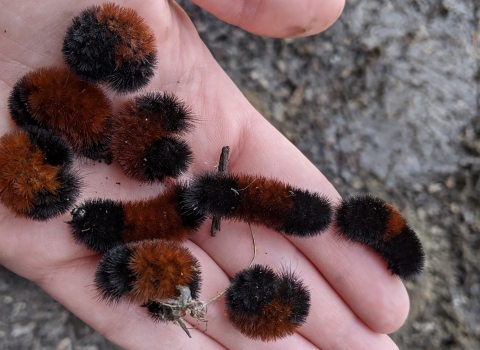What is fish habitat? Fish habitat refers to the rivers, streams, lakes, estuaries, and other places where fish live. Fish need safe and healthy habitats in order to live and thrive, and healthy habitats mean healthier fish populations for the benefit of the American people.
With much of America’s waters impaired, fish populations continue to decline at an alarming rate. So far, fragmented restoration efforts have not done enough to reverse these trends. The National Fish Habitat Partnership program is a comprehensive effort to treat root causes of fish habitat decline by working collaboratively through a network of 20 regional Fish Habitat Partnerships. These Partnerships leverage federal, state, tribal, and private resources to achieve the greatest impacts on conservation. Since its inception in 2006, the National Fish Habitat Partnership has funded over 1,100 conservation projects. Since 2017, the Service has provided over $18 million to conservation projects, while leveraging over $120 million in match, to improve fish habitat and recreational opportunities from Hawaii to Maine. In 2020, America’s Conservation Enhancement Act (ACE Act) codified the National Fish Habitat Partnership program into law, helping to ensure this collaborative, partnership-driven, conservation program will continue to protect, restore, and enhance the Nation’s fish habitat into the future.
The benefits of fish habitat conservation work under the National Fish Habitat Partnership program are many:
Healthy habitat means healthy fisheries – Before you can catch them, fish need a place to live, grow, and reproduce. Through the work of the National Fish Habitat Partnership program, the Service and our partners work to ensure the health of our nation’s aquatic ecosystems, thus working to enhance fishing opportunities for the American people. For example, the Ohio River Basin Fish Habitat Partnership has contributed to the improvement of smallmouth bass fisheries across Ohio and Indiana. Two projects, one on the Stillwater River near West Milton, Ohio and one on the Eel River near Manchester, Indiana, removed dams, restored in-channel fish passage fish passage
Fish passage is the ability of fish or other aquatic species to move freely throughout their life to find food, reproduce, and complete their natural migration cycles. Millions of barriers to fish passage across the country are fragmenting habitat and leading to species declines. The U.S. Fish and Wildlife Service's National Fish Passage Program is working to reconnect watersheds to benefit both wildlife and people.
Learn more about fish passage , and decreased sedimentation. The project resulted in an increase in smallmouth bass spawning habitat and these areas are now known among anglers to have some of the best smallmouth bass fishing on the Stillwater and Eel Rivers.
The work is voluntary – The National Fish Habitat Partnership program takes a voluntary, non-regulatory, approach to address the nation’s fish habitat conservation challenges.
Funding is leveraged to maximize results – Under NFHP, Federal, State, Tribal, and privately raised funds are leveraged to address the nation’s biggest fish habitat challenges. In 2019, limited federal funding from the Service was leveraged by more than 3 to 1 with funds from other partners.
Other benefits – Other benefits include job creation through direct funding investments and more resilient infrastructure. For example, undersized culverts in road crossings often act as barriers to fish passage, but can also cause water to back up behind the crossing during storms, often leading to culvert failure and severe road damage. Fish Habitat Partnership projects that address undersized culverts provide benefits for fish populations that require freedom of movement within an aquatic system and infrastructure that is more resilient to severe weather events.



